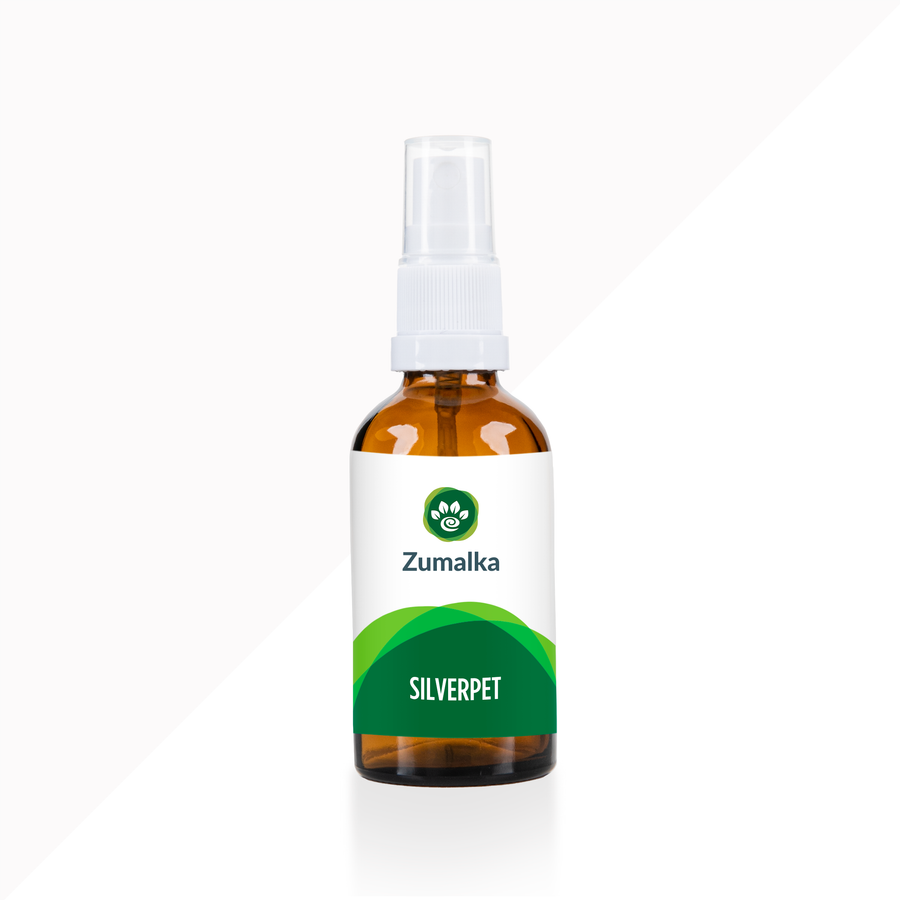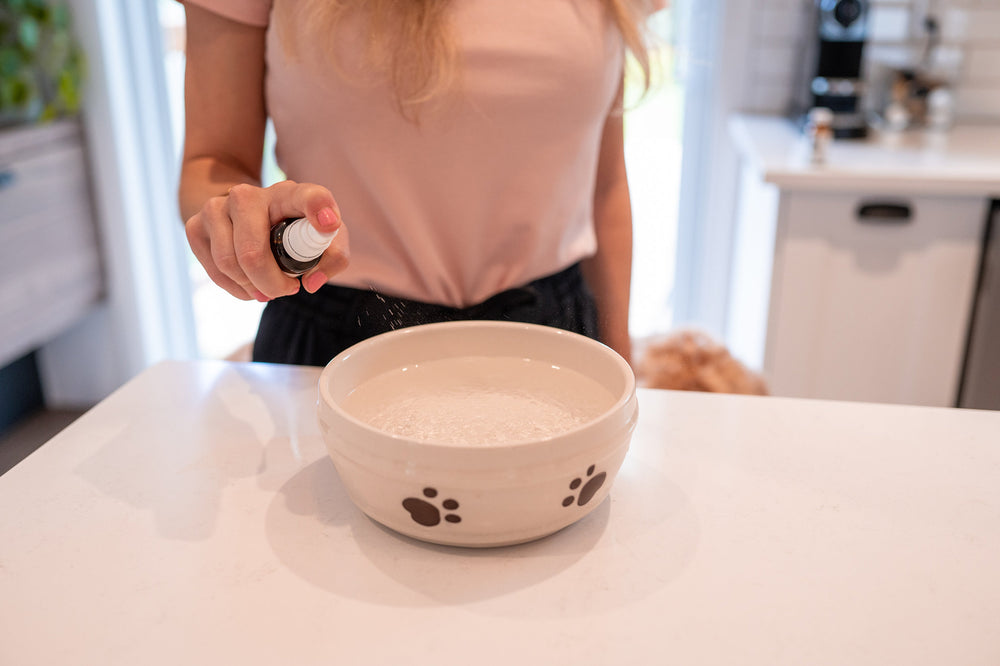Vet-Verified: Understanding the 3 Types of Feline Diabetes
Did you know diabetes affects up to 1 in 230 cats? With early diagnosis and proper care, including regular vet visits or homeopathic support, diabetic cats can live long, healthy, and happy lives.
This article covers everything you need to know about diabetes in cats, including its three types, common signs, risk factors, diagnosis, treatment, and practical tips for managing the condition at home.
Feline Diabetes: What Every Pet Owner Should Know

Feline diabetes mellitus is a prevalent endocrine disorder that impairs the body’s ability to produce or respond to insulin effectively.
As a result, blood sugar levels become dangerously high, potentially leading to severe health complications if not addressed. With early detection and consistent care, diabetic cats can enjoy long, healthy lives.
Insulin is a hormone produced by the pancreas that controls blood sugar levels by helping glucose enter the cells for energy. When this process is disrupted, glucose builds up in the bloodstream, leading to diabetes in cats.
What are the 3 Different Types of Diabetes in Cats?
Did you know there are three distinct types of feline diabetes? Each type differs in its risk factors and how commonly it affects cats. Let’s take a closer look at each one.
Type I diabetes: When the body stops producing insulin
Type I diabetes in cats is rare and occurs when the pancreas’s beta cells are destroyed, preventing insulin production. Without insulin, blood sugar levels rise dangerously, requiring lifelong insulin therapy for management.
Type II diabetes: The most common form in cats
Type II feline diabetes, also known as insulin-resistant or non-insulin-dependent diabetes, accounts for 85–95% of feline cases and is often linked to obesity. In this form, the body produces insulin, but the cells no longer respond to it effectively, leading to elevated blood sugar levels.
Type III Diabetes: Hormone-Driven Insulin Resistance
Type III diabetes in cats is caused by hormonal imbalances from conditions like pregnancy or tumors, which interfere with insulin’s effectiveness. Though less common, this type can lead to persistent high blood sugar and often resolves once the underlying issue is treated.
Important note: Feline diabetes is now the second most common hormonal disorder in cats, with cases continuing to rise. Excess weight is a major contributing factor, putting overweight and obese cats at greater risk.
Recognizing Diabetes in Cats: Early Symptoms and Warning Signs
The primary symptoms of diabetes in cats are excessive thirst, frequent urination, weight loss, and increased appetite. These signs are often missed early on, particularly in outdoor cats or those with subtle changes.
Here are some additional signs that may indicate feline diabetes:
- Poor coat quality
- Urinating outside the litter box
- Lethargy or general weakness
- Behavioral changes, such as irritability
- Muscle wasting
- Plantigrade stance (dropped hocks) in advanced or uncontrolled cases
- Decreased appetite in some cats
Spotting these symptoms early? Don’t wait—reach out to your veterinarian or a trusted pet homeopathy specialist promptly. Timely care plays a vital role in successfully managing feline diabetes and protecting your cat’s health.
Is Your Cat at Risk? Understanding Feline Diabetes Risk Factors
The following risk factors can significantly increase your cat’s likelihood of developing diabetes:
- Sex: Male cats are more commonly affected than females.
- Breed: Burmese cats may have a higher genetic risk, especially in certain regions.
-
Neutered Status: Diabetes appears to be more common in neutered cats.
Underlying Conditions: Diseases like hyperthyroidism, pancreatitis, and asthma (especially when treated with steroids) can increase risk. - Age: Middle-aged to senior cats are more likely to develop diabetes.
- Medications: Long-term use of glucocorticoids (steroids) can interfere with insulin function.
- Weight: Obesity is one of the leading risk factors for feline diabetes.
- Lack of Exercise: Inactive cats are more prone to weight gain and insulin resistance.
Feline Diabetes Diagnosis: How Vets Confirm the Condition

Diagnosing feline diabetes involves evaluating clinical signs, consistently elevated blood glucose levels (hyperglycemia), and the presence of glucose in the urine (glucosuria).
However, stress can temporarily raise a cat’s blood sugar, a condition known as stress hyperglycemia. For accurate results, veterinarians often recommend repeated testing or additional diagnostics.
Veterinarians often use a serum fructosamine test to measure a cat’s average blood glucose levels over the previous 7–14 days, helping to distinguish diabetes from stress-related spikes. This test provides a clearer picture of long-term glucose control.
Additional diagnostics may also be conducted to rule out other conditions with similar symptoms.
Feline Diabetes Treatment: How to Manage Your Cat’s Condition
Managing feline diabetes is a lifelong commitment that requires ongoing care, consistency, and dedication. With the right treatment plan and daily monitoring, diabetic cats can lead full, healthy lives.
Insulin therapy for cats with diabetes
- Essential treatment: Insulin injections are the cornerstone of managing feline diabetes.
- Dosing frequency: Most cats require injections once or twice daily, depending on their individual needs.
- Initial hospitalization: Your vet may recommend a short hospital stay to determine the correct insulin dosage safely.
- User-friendly tools: Small needles and insulin pens are available, making injections easier and less stressful for both cats and owners.
- Types of insulin: Common options include PZI, glargine, lente, and NPH, each with different action profiles suited to your cat’s condition.
Dietary Management for Feline Diabetes
- High-protein, low-carb diet: A balanced diet rich in protein and low in carbohydrates helps regulate blood sugar levels.
- Wet over dry food: Wet food is generally preferred, as it typically has fewer carbs and more moisture.
- Healthy weight is key: Achieving a healthy weight is essential—some overweight cats may even go into remission with weight loss.
- Consistent feeding schedule: Feeding your cat at the same times each day supports stable glucose levels and effective insulin timing.
Oral medications for feline diabetes
- Not for every cat: Oral medications aren't suitable for all cats and are generally limited to specific cases.
- SGLT2 inhibitors: Newer drugs like velagliflozin and bexagliflozin promote glucose excretion through urine and may help newly diagnosed, otherwise healthy cats not yet treated with insulin.
- Contraindications apply: SGLT2 inhibitors are not recommended for cats with kidney issues, dehydration, or those in poor overall health.
- Sulfonylureas: Drugs like glipizide and glimepiride stimulate insulin release but only work if beta cells are still functional and are not effective for all feline patients.
- Insulin still needed: In most cases, oral medications alone aren’t enough—insulin therapy is typically required, especially at the start of treatment.
Quick note: We'll also cover helpful home care tips to support effective feline diabetes management as you continue reading.
Monitoring Feline Diabetes: Why Ongoing Care Matters
Consistent monitoring is key in managing pet diabetes effectively. Tools like pet-specific glucometers (e.g., AlphaTrak) make it easier for pet owners to check blood glucose levels at home. This empowers early intervention and helps maintain optimal glycemic control.
Continuous glucose monitoring (CGM) systems provide a valuable option for extended and real-time tracking of glucose levels in pets. While urine glucose monitoring is less sensitive, it may still signal the need for additional testing. However, insulin adjustments should never be based on urine glucose results alone.
Routine veterinary visits for blood testing, including fructosamine levels, remain essential for comprehensive diabetes management in pets. At-home tracking of daily and weekly details—such as insulin doses, food and water intake, and weight—is equally important.
Together, these practices provide a clearer picture of the pet’s health and support more effective treatment decisions.
Always consult your veterinarian before making any changes to your pet’s insulin dosage. Proper veterinary oversight helps prevent complications and keeps your pet’s diabetes under control. Consulting a qualified pet homeopath is also beneficial.
Hypoglycemia and DKA in Cats: Life-Threatening Risks of Feline Diabetes
Too much insulin can cause hypoglycemia, a dangerous drop in blood sugar that requires immediate action. Warning signs include weakness, tremors, lethargy, uncoordinated movements, and even seizures.
If suspected, apply a fast-acting sugar like honey or glucose syrup directly onto your pet's gums and contact your veterinarian or an emergency clinic right away.
Diabetic ketoacidosis (DKA) is a life-threatening complication of poorly controlled diabetes in pets. It occurs when the body produces high levels of ketoacids due to a lack of insulin, often resulting from poorly controlled diabetes, leading to dangerous metabolic imbalances.
Immediate and intensive veterinary treatment is critical to stabilize the pet and prevent fatal outcomes.
Diabetes in Cats: Prognosis and Chances of Remission

With proper care, many diabetic cats can enjoy long, healthy lives. Some cats may even achieve diabetic remission—maintaining normal blood sugar levels without insulin, especially with early intervention, weight management, and the right insulin.
However, ongoing monitoring remains essential, even in remission, to ensure continued stability.
The long-term outlook for diabetic pets depends on factors such as age, the ability to regulate blood sugar, and the presence of other health conditions. Early diagnosis and effective management greatly improve prognosis.
Without treatment, however, diabetes is ultimately fatal.
Home Care for Diabetic Cats: Simple Solutions for Pet Owners
Managing feline diabetes goes beyond conventional treatments—effective care also requires key home strategies. These at-home solutions play a critical role in supporting recovery and long-term blood sugar control:
- Encourage regular exercise: Light daily activity helps regulate blood sugar and maintain a healthy weight.
- Stick to the vet’s feeding and insulin schedule: Consistency with meals and insulin timing is key to stable glucose levels.
- Maintain a healthy weight: Weight management supports better insulin sensitivity and overall health.
- Keep a health log: Track insulin doses, food intake, water consumption, and behavior changes to share with your vet.
- Provide extra litter boxes: Increased urination is common—more litter boxes can help prevent accidents and reduce stress.
- Monitor glucose levels if advised: Learn how to check blood or urine glucose at home to stay ahead of potential issues.
- Maintain open communication with your vet or pet homeopath: Keep your veterinarian or pet homeopathy expert updated on any changes or concerns to adjust care as needed.
- Establish a consistent routine: Cats thrive on predictability—regular daily patterns support stable blood sugar.
- Provide constant access to clean water and nutritious food: Ensure your cat has uninterrupted access to fresh water and diabetes-appropriate meals to support hydration and stable blood sugar.
- Recognize signs of hypoglycemia: Learn symptoms like weakness, shaking, or lethargy, and know how to respond quickly.
- Master insulin injection technique: Proper administration is crucial for effective treatment and your cat’s comfort.
Don’t overlook the value of consulting a pet homeopathy specialist for cat diabetes.
An Online Homeopathic Consultation can be very helpful for a cat with diabetes by offering a personalized, holistic approach to support their overall well-being. Here's how it can help:
Individualized Remedy Selection: Homeopathy treats the whole animal, not just the condition. A qualified practitioner will assess your cat’s unique symptoms—such as appetite, thirst, weight changes, behavior, and energy levels—and recommend a tailored remedy based on those specific patterns.
Complementary Support: While not a replacement for insulin or veterinary care, homeopathic remedies can be used alongside conventional treatment to help improve your cat's comfort, balance blood sugar naturally, and support organs like the pancreas and kidneys.
Minimally Invasive: Online consultations provide expert guidance without the stress of a clinic visit, which is especially helpful for diabetic cats who need to avoid unnecessary anxiety or disruption.
Ongoing Monitoring: Follow-ups can be done remotely, allowing for regular adjustment of remedies and continued support as your cat’s condition evolves.
Whole-Body Wellness: Homeopathy also considers emotional well-being, digestion, and immune support—factors often impacted in chronic illnesses like diabetes.
FAQs
How long will a cat live with diabetes?
With proper treatment and consistent care, many diabetic cats can live for several years. Early diagnosis, stable blood sugar control, and regular veterinary check-ups greatly improve both lifespan and quality of life. Consulting a pet homeopathy specialist is also helpful.
How can you tell if your cat has diabetes?
Common signs of feline diabetes include excessive thirst, frequent urination, unexplained weight loss, and low energy. If your cat shows these symptoms, consult a veterinarian or pet homeopathy expert for timely care and diagnosis.
How to help a diabetic cat?
To help a diabetic cat, follow your vet’s insulin and diet plan, monitor blood sugar, maintain a healthy weight, and establish a consistent routine. Regular checkups and open communication with your care team (e.g., veterinarian and pet homeopathy expert) are essential.
Are diabetic cats hungry all the time?
Yes, many diabetic cats feel constantly hungry due to their body’s inability to use glucose properly. Despite increased appetite, they often lose weight. Persistent hunger warrants prompt veterinary evaluation and diabetes screening.
What shouldn't be fed to a diabetic cat?
Diabetic cats should avoid high-carbohydrate foods, sugary treats, and anything not approved by a veterinarian. Feeding inappropriate foods can spike blood sugar levels and disrupt insulin regulation, making diabetes harder to control effectively.
Are cats with diabetes in pain?
Diabetic cats aren’t usually in pain, but untreated or poorly managed diabetes can lead to serious complications. With consistent care and treatment, most cats can live comfortably without significant discomfort.
What is the best food for diabetic cats?
The best food for diabetic cats is a high-protein, low-carbohydrate diet, often in wet form. Always consult your veterinarian or pet nutritionist to choose a diet that supports stable blood sugar levels.
What are the last stages of diabetes before death in cats?
In the final stages of diabetes, cats may experience severe weakness, dehydration, vomiting, loss of appetite, and diabetic ketoacidosis. Without urgent veterinary care, these symptoms can lead to coma and ultimately death.
How do cats act when their sugar is high?
When a cat's blood sugar is high, they may show signs like excessive thirst, frequent urination, lethargy, and weight loss. Persistent high sugar levels require prompt veterinary attention to prevent complications.
Can I give my diabetic cat sugar water?
Sugar water should only be given to a diabetic cat during a hypoglycemic emergency and under veterinary guidance. Regular use can be harmful and may dangerously spike blood sugar levels in diabetic cats.
Is wet food better for diabetic cats?
Wet food is generally recommended for diabetic cats due to its lower carbohydrate content and higher moisture levels. It supports better blood sugar control and aligns more closely with a cat’s natural diet.
Is chicken ok for a diabetic cat?
Yes, plain cooked chicken is generally safe for diabetic cats. It’s high in protein and low in carbohydrates, making it a good dietary option. Always serve it unseasoned, and consult your veterinarian or pet homeopathy specialist first.
Key Takeaways
Managing feline diabetes takes daily dedication, but with the right support, it’s highly manageable. Early diagnosis is key to avoiding complications and promoting long-term health. Working closely with your veterinarian and a pet homeopathy specialist ensures personalized, effective care for a better quality of life.
With proper care and commitment, diabetic cats can live happy, healthy lives. Advances in treatment and at-home support make managing the condition more achievable than ever. Pet owners play a powerful role in their cat’s well-being and long-term quality of life.








Thanks for reaching out Judy, and we are sorry to hear about your cat. We have sent you a questionnaire via email to get more information about your pet’s situation. Please check your inbox. Looking forward to hearing back from you soon!
Blood work just showed my almost 15 yr old male cat will need insulin or the pill! As senior citizens We cannot afford either! He has been on a diabetic diet for a few years. He has always been an inside cat. Do I have any other options??
Thanks for your input, Jamie ! We know that the natural world is filled to the brim of helpful ingredients for us and our pets. Its a pleasure to add more and more knowledge along the way :)
Good article, however I feel it overlooks efficiacy of many, many herbs for diabetes scientifically proven (that cats could tolerate) and even suppliments like Berberine being used. My human friend lowered his daily # from 24 to 5.7 in months, all natural, no other changes but herbs; cats can ingest most the herbs he used. Something to consider!!
Thanks for reaching out, Judy ! We have sent you a questionnaire via email to get more information about your pet’s situation ! Please check your inbox. Looking forward to hearing back from you soon !
Leave a comment